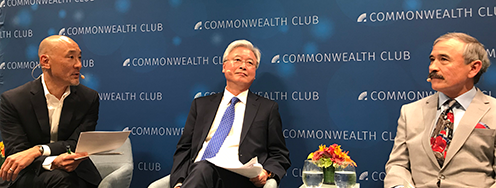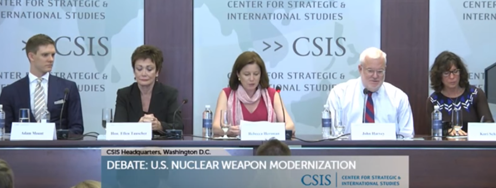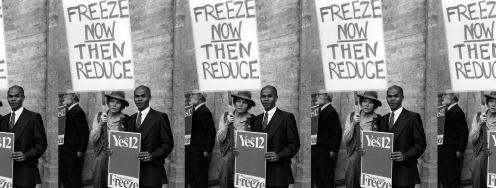Can a nuclear test ban be verified?
by Alexandra Bell
A quartet of Ploughshares Fund grantees gathered at the New America Foundation to discuss the verifiability of the Comprehensive Nuclear Test Ban Treaty (CTBT). Despite an icy winter storm in Washington, DC., the event was heavily attended.
Jeffrey Lewis, director of the Nuclear Strategy and Nonproliferation Initiative at the New America Foundation, invited Andreas Persbo of the Verification Research, Training and Information Centre (VERTIC) to present his findings from a recent trip to the former Soviet nuclear test site in Kazakhstan, where, with Ploughshares Fund support, he observed a test of the On-Site Inspection (OSI) system by the Comprehensive Test Ban Treaty Organization (CTBTO). He stated that OSI is capable of detecting tests and thinks that it will only get better with U.S. assistance. (See Persbo's presentation here.)
David Hafemeister of the Arms Control Association agreed and called for multilple Senate hearings on the verification aspects of the CTBT in order to prove the treaty's efficacy. He contended that Senators should acknowledge that this is a political debate now, not a scientific one. The Carnegie Endowment's James Acton also said that the monitoring and verification tools of the CTBT would make cheating very difficult. He pointed out that the treaty's International Monitoring System (IMS) could actually pinpoint a inspection location, a luxury not afforded to other compliance treaties.
Both President Barack Obama and Secretary of State Hillary Clinton have committed to the ratification of the CTBT "as soon as practicable," and all panelists agreed that the technical and political aspects of verification will be a key issue to the prospect of the treaty's ratification. Removing the hurdles to ratification is a key priority for Ploughshares Fund in 2009.



